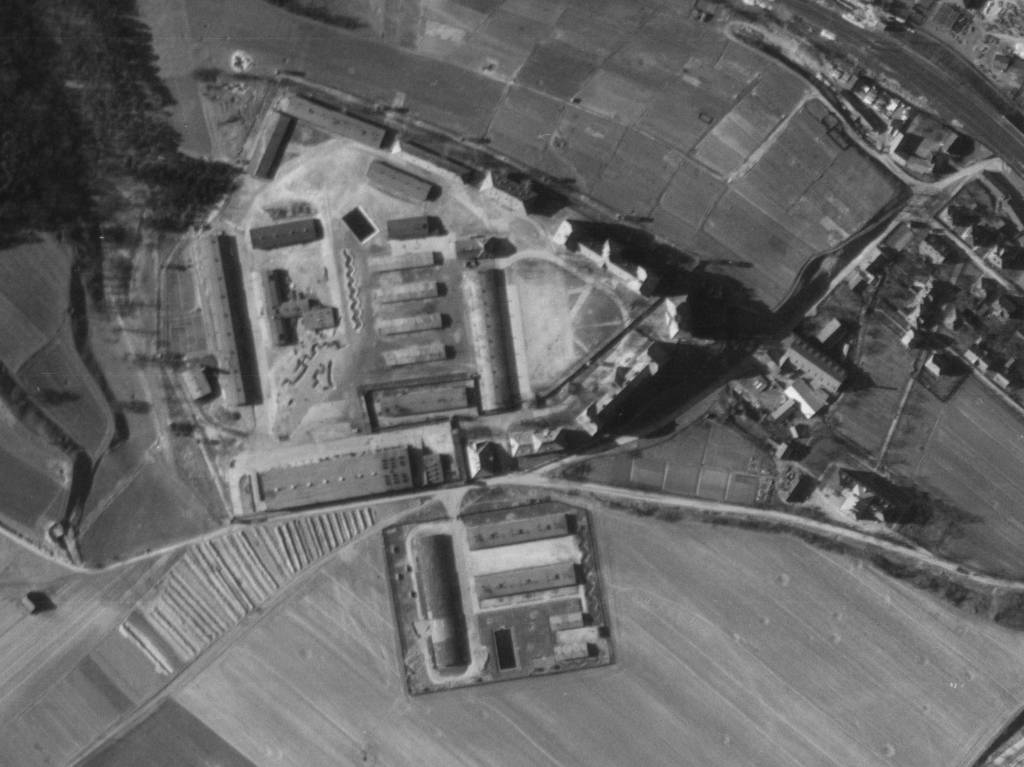Opening of the Melk camp
On Friday 21 April 1944 the first transport arrived at Melk railway station. The 500 prisoners, mainly French, were force-marched onto the site of the Birago Pioneer Barracks. Three days later a second transport with 532 prisoners followed. At first the prisoners were housed on the first floor of an elongated garage building known as ‘Objekt 10’, with the prisoners’ kitchen set up on the ground floor. They were immediately forced to start work on turning the site into a concentration camp subcamp. This included establishing the protective custody camp where prisoners were held, which was surrounded by barbed wire to separate it from the SS administration area. Watchtowers were also built around the protective custody camp. Over the following months, the number of prisoners increased gradually and more wooden huts were erected in the protective custody camp to house them. As time went on, the prisoners were moved into some existing multi-storey buildings within the barracks complex – divided between several blocks – and into newly erected huts of the Reich Labour Service (RAD).
 This detail from an aerial photo shows the Melk subcamp a few weeks after it was evacuated. Photo NARA/NCAP, 16.3.1945.By April 1945, a total of almost 14,400 men had been deported to Melk. This made it the fourth-largest concentration camp on Austrian territory – after Mauthausen, Gusen and Ebensee – and the largest by far in Lower Austria. In January 1945 the number of prisoners reached a peak of around 10,400. They were incarcerated under appalling, extremely cramped conditions in a barracks complex intended for a maximum of 7,500 prisoners.
This detail from an aerial photo shows the Melk subcamp a few weeks after it was evacuated. Photo NARA/NCAP, 16.3.1945.By April 1945, a total of almost 14,400 men had been deported to Melk. This made it the fourth-largest concentration camp on Austrian territory – after Mauthausen, Gusen and Ebensee – and the largest by far in Lower Austria. In January 1945 the number of prisoners reached a peak of around 10,400. They were incarcerated under appalling, extremely cramped conditions in a barracks complex intended for a maximum of 7,500 prisoners.